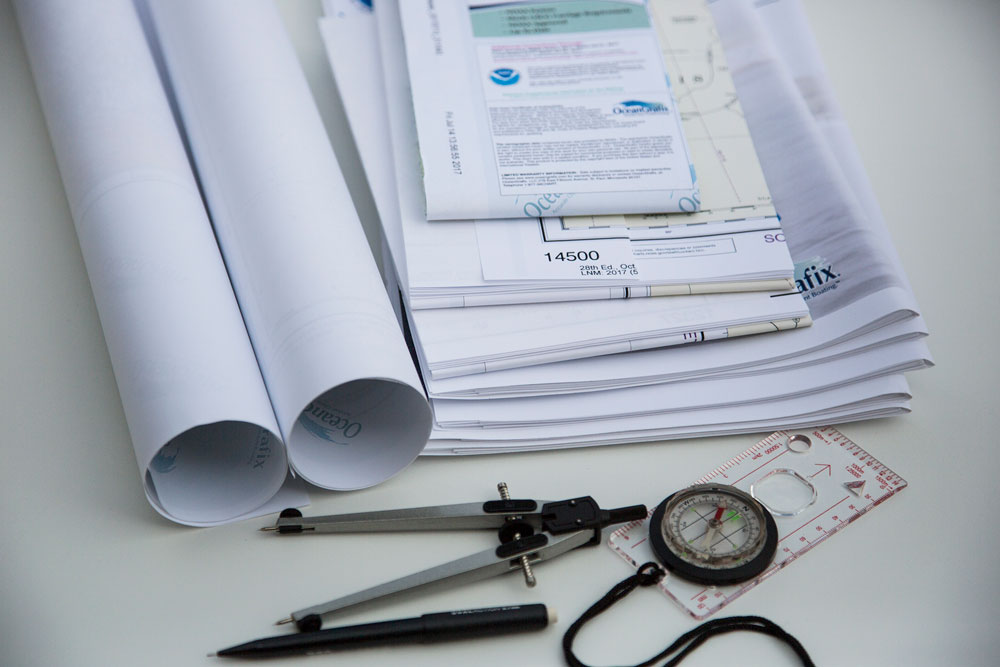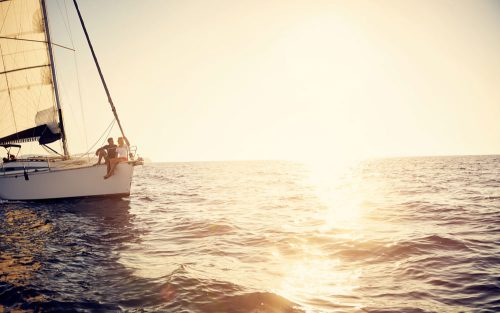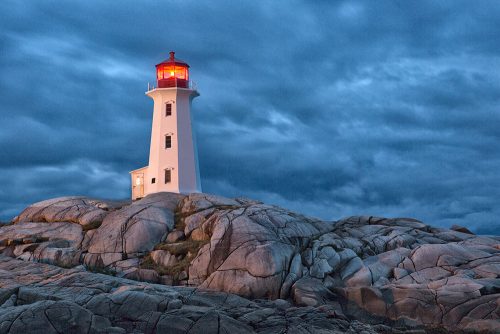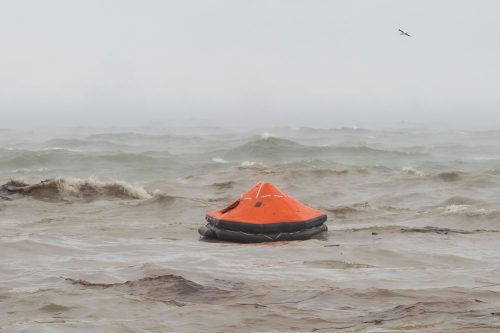Nautical charts, also known as marine charts or navigational charts, provide crucial information for safe and efficient navigation on the water. Many boaters don’t feel safe navigating without them.
The most used domestic navigational charts are National Oceanic and Atmospheric Administration (NOAA) nautical charts. NOAA charts are used by mariners to safely navigate coastal and offshore waters in the United States. These charts contain a wealth of information to ensure safe and efficient maritime navigation.
Here are some of the key pieces of information typically found on NOAA nautical charts:
Geographic Data: Charts display the geographic features of the area, including coastlines, shorelinesand nearby islands. They provide accurate representations of the coastline and seabed.
Depth Contours: Bathymetric contours, also known as depth contours or soundings, show the underwater topography, allowing mariners to understand the depths and contours of the seabed.
Aids to Navigation: Information about buoys, beacons, lights and other navigational aids are included to help mariners determine their positions and avoid hazards.
Shoals, Rocks, and Obstructions: Charts depict hazards to navigation, such as submerged rocks, shoals, wrecks and obstructions. This information is crucial for avoiding accidents and groundings.
Harbors and Ports: Charts include detailed information about harbors, ports, anchorages, piers and docks, including water depths, channels and facilities available.
Tidal Information: Charts often include tidal data, such as the times and heights of high and low tides, which is essential for safe navigation in areas affected by tides.
Current Information: Some charts provide information about ocean currents, which can significantly impact navigation.
Magnetic Variation: The charts indicate the magnetic variation, which is the angular difference between true north and magnetic north and helps mariners adjust their compasses accordingly.
Chart Symbols and Abbreviations: Charts are covered with various symbols and abbreviations that convey information about the features and conditions of the area. NOAA provides a legend to help mariners interpret these symbols.
Chart Updates: Navigational information can change due to shifting shoals, new navigational aids, or changes in underwater terrain. As a result, mariners should regularly get updated charts.
Weather and Climate Data: While not as detailed as weather charts, nautical charts may include basic weather information, such as prevailing wind directions.
NOAA nautical charts are essential tools for mariners, whether they are operating commercial vessels, recreational boats, or conducting scientific research. These charts provide the necessary information to navigate safely and avoid maritime hazards.
Additional resources augment information on nautical charts
For boaters, it’s helpful to supplement navigational charts with additional tools and sources, such as GPS, weather reports, and local knowledge to ensure safe and effective navigation. Here are other important resources:
The United States Coast Pilot® Series
The U.S. Coast Guard publishes a series of nautical books that cover a variety of information important to navigators of coastal and intracoastal waters and the Great Lakes. Issued in ten volumes, they contain supplemental information that is difficult to portray on a nautical chart. Topics include channel descriptions, anchorages, bridge and cable clearances, currents, tide and water levels, prominent features, pilotage, towage, weather, ice conditions, wharf descriptions, dangers, routes, traffic separation schemes, small-craft facilities, and federal regulations applicable to navigation.
The USCG Light List
The Light List is published in seven volumes and contains lights and other aids to navigation used for general navigation that are maintained by or under the authority of the U.S. Coast Guard and located in the waters surrounding the United States and its territories. Each volume corresponds to a different regional area and contains more complete information on each aid to navigation than can be conveniently shown on charts. This publication and the data contained within it is maintained and published by the USCG.
NOAA’s Tide Tables and Tidal Current Tables
The tide and/or tidal current predictions and associated information are produced by and obtained from the Department of Commerce, National Oceanic and Atmospheric Administration and National Ocean Service. Daily High and Low Water Predictions for more than 100 reference ports and 3,000 subordinate stations provide U.S. coastal coverage. They are available in two volumes, covering the East and Gulf Coasts of the United States including the Bahamas and Caribbean Islands, and West Coast of the United States including the Hawaiian Islands and U.S. Territories in the Pacific. Predicted times of slack water, and times and speeds of maximum current (flood and ebb) are provided for each day of the year.




